Are you looking for a rare and beautiful indoor plant to add a touch of tropical elegance to your home? Look no further than Philodendron atabapoense. This stunning plant with its dual-colored foliage is a favorite among plant enthusiasts in the UK. But how do you care for this beauty to ensure it thrives in your home?
Let me guide you through the essential care tips for Philodendron atabapoense, from light requirements to watering, pruning, and more. Discover the secrets to keeping this plant healthy and vibrant in British conditions.
Appearance of Philodendron atabapoense
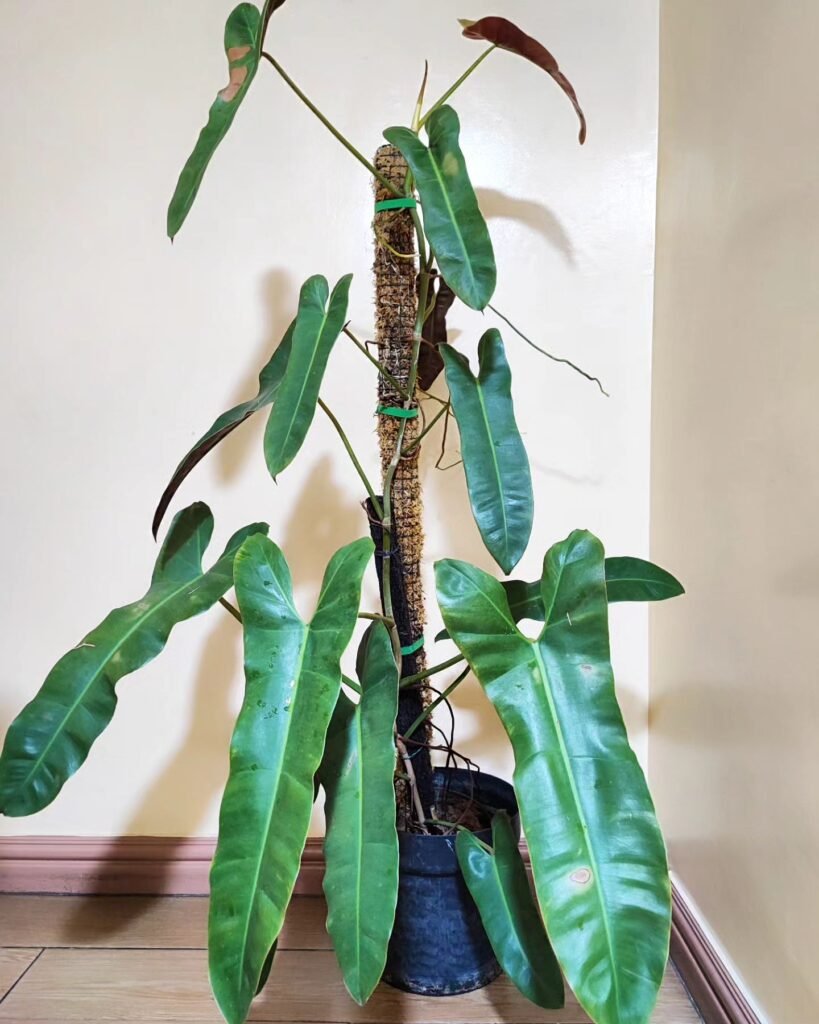

The leaves of Philodendron atabapoense have a distinctive appearance that sets them apart. Shaped like small arrows, the leaves point in different directions, creating an intriguing pattern. As the leaves mature, their edges become sharper, providing added definition and visual interest.
One of the most captivating features of Philodendron atabapoense is its dual-colored foliage. The top side of the leaves is a vibrant green, while the underside boasts a deep maroon red. This contrasting color scheme adds a touch of elegance and drama to any indoor space, making the plant a true showstopper.
Whether you’re a plant enthusiast or someone who simply appreciates natural beauty, the unique and attractive appearance of Philodendron atabapoense is sure to charm and inspire.
 Did you know the Philodendron atabapoense is notable for its glossy, elongated leaves with a unique iridescence? This shimmering effect, under certain light, gives them a nearly metallic appearance, making it a rare find in the philodendron family.
Did you know the Philodendron atabapoense is notable for its glossy, elongated leaves with a unique iridescence? This shimmering effect, under certain light, gives them a nearly metallic appearance, making it a rare find in the philodendron family.
Light Requirements for Philodendron atabapoense


Philodendron atabapoense is a tropical houseplant that thrives in bright indirect light. To meet its light requirements, it is best to place the plant near a window that does not receive direct sunlight. The intense rays of direct sunlight can harm the delicate leaves of this plant, causing them to burn and become stressed. It is important to provide the right amount of light to ensure the healthy growth and vibrant foliage of Philodendron atabapoense.
If the plant does not receive enough light, it may exhibit slow growth and develop smaller leaves with wider gaps between them. This is a sign that the plant is not getting enough light to support its photosynthesis process properly. By placing the Philodendron atabapoense in a well-lit area away from direct sunlight, you can ensure its light requirements are met and it can thrive in your indoor space.

Watering Tips for Philodendron atabapoense
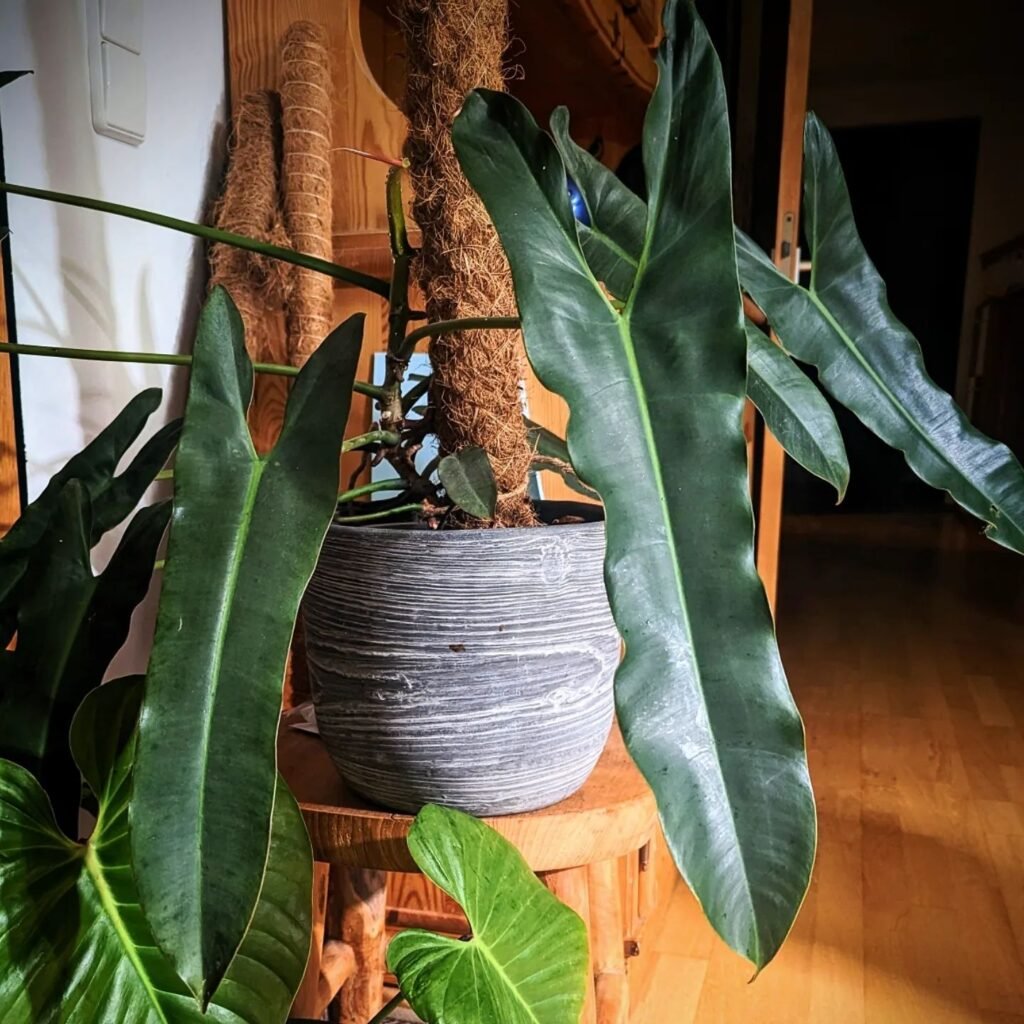
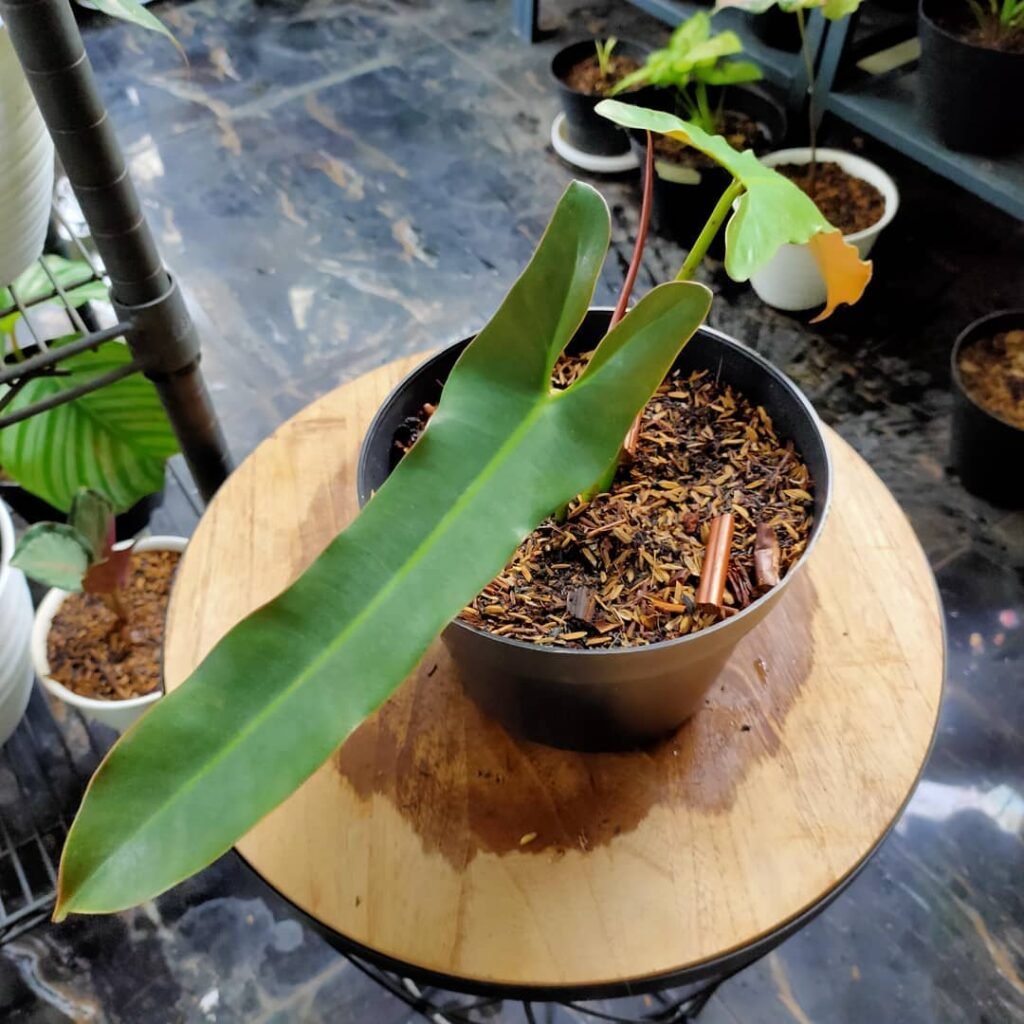
When it comes to watering your Philodendron atabapoense, it’s important to strike the right balance to keep the plant happy and healthy. Overwatering can be detrimental to its overall well-being. To ensure you’re providing the right amount of water, follow these watering tips:
- Check the soil: Before watering, check the moisture level of the soil. Stick your finger about an inch into the soil to determine if it’s dry or damp.
- Water when the top half of the soil is dry: Philodendron atabapoense prefers to be watered when the top half of the soil has dried out. This means that you don’t need to water it every day. Wait until the soil feels dry to the touch before giving it a drink.
- Avoid constant moisture: It’s better to let the soil dry out a bit between waterings rather than keeping it constantly moist. Overwatering can lead to root rot and other issues.
- Monitor soil moisture: Regularly monitor the moisture level of the soil to prevent overwatering. Aim for a balance where the soil is consistently moist but not overly saturated.

Fertilizing and Soil for Philodendron atabapoense


Philodendron atabapoense, like any other houseplant, benefits from regular fertilizing to promote healthy growth. I highly recommend using a liquid fertilizer specifically formulated for green houseplants. Dilute the fertilizer to half the recommended amount to avoid overfertilizing the plant.
When it comes to the soil, Philodendron atabapoense prefers a well-drained medium that is rich in organic matter. It is important to provide a suitable environment for the roots to thrive. Using a high-quality potting mix that contains a good balance of nutrients and organic materials can help ensure the optimal growth and development of the plant.
To prevent water accumulation and avoid the risk of root rot, it is essential to choose a pot with drainage holes. These holes allow excess water to escape, preventing the soil from becoming overly saturated. Remember, too much water can be detrimental to the health of your Philodendron atabapoense.
In summary, fertilizing regularly and using an appropriate well-drained soil mix are vital for the success of your Philodendron atabapoense. By providing the right nutrients and an optimal growing medium, you will ensure that your plant thrives and remains healthy in its indoor environment.

Pruning and Maintenance of Philodendron atabapoense
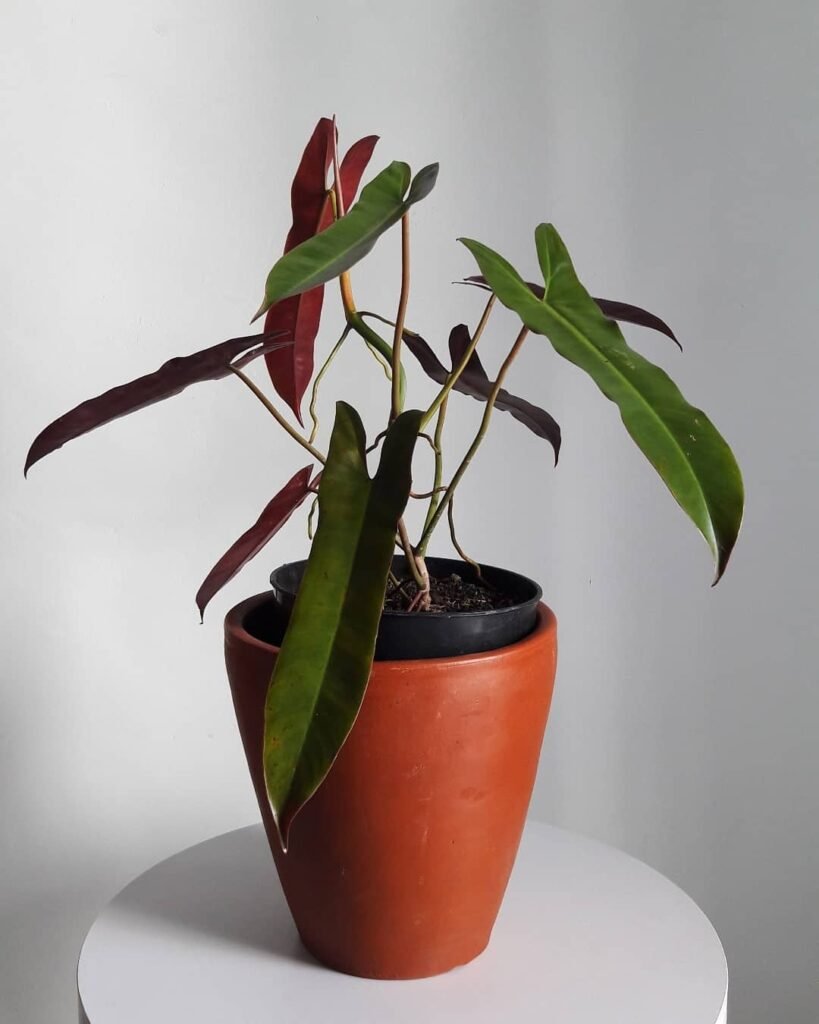
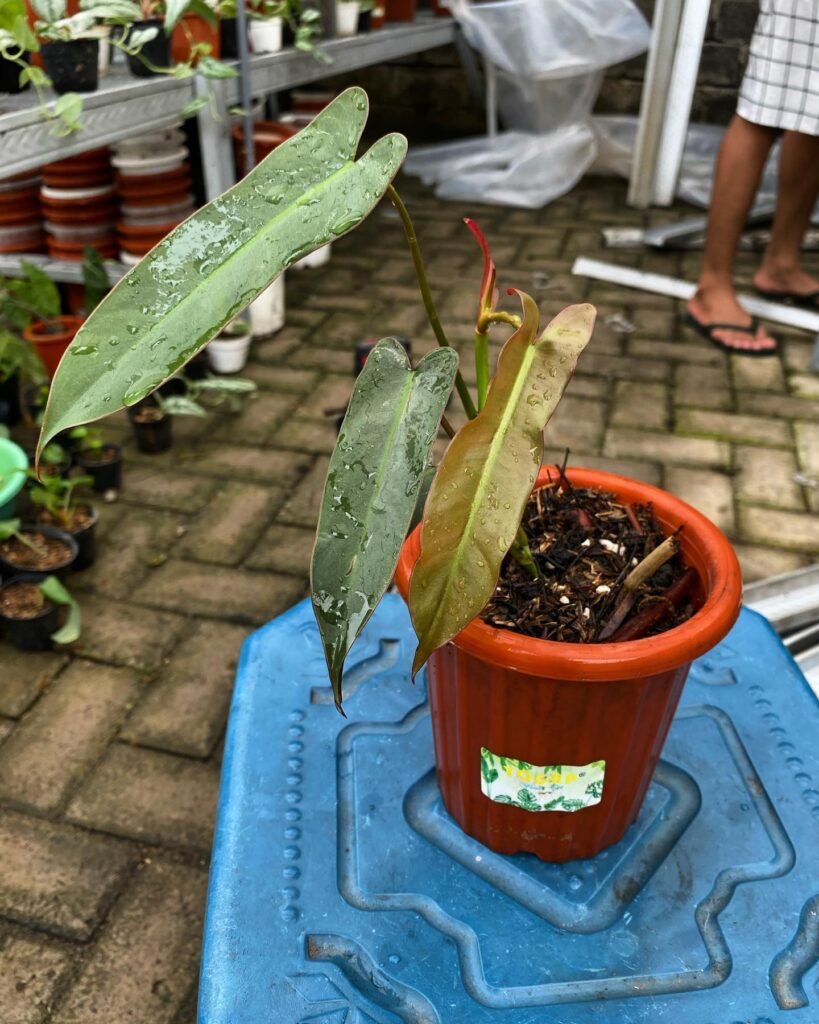
Regular pruning is essential for the proper care and maintenance of Philodendron atabapoense. Pruning helps to maintain the plant’s overall health and appearance. It involves removing any discolored or damaged leaves to promote healthy growth and keep the plant looking beautiful.
When pruning Philodendron atabapoense, it is important to identify any leaves that show signs of discoloration or damage. These leaves can be easily distinguished from healthy ones as their color may appear faded or they may have spots or blemishes. Use a pair of clean, sharp pruning shears or scissors to trim off these leaves. Make sure to sanitize the tools before and after pruning to prevent the spread of any potential diseases.
- Start by examining the entire plant and identify any discolored or damaged leaves.
- Using clean and sharp pruning shears, cut the damaged leaves at the base, close to the stem.
- Dispose of the pruned leaves properly, either by composting or discarding them in a sealed bag.
Regularly monitoring the overall condition of your Philodendron atabapoense is also important. Keep an eye out for any signs of pests, diseases, or nutrient deficiencies. Look for common issues such as yellowing or drooping leaves, which may indicate problems with light levels or watering. Promptly address any problems or concerns to ensure the continued health and vitality of your plant.
Propagating Philodendron atabapoense


If you’re looking to expand your collection of Philodendron atabapoense or share the beauty of this tropical houseplant with friends and family, propagation through stem cuttings is a simple and effective method. Here’s how to propagate Philodendron atabapoense:
- Choose a healthy stem: Look for a stem that has multiple leaves and is free from any signs of damage or disease. This will ensure the success of your propagation.
- Cut below a leaf node: Using a clean and sharp pair of scissors or pruning shears, make a clean cut just below a leaf node. A leaf node is where a leaf is attached to the stem.
- Place the cutting in water or a moist potting mix: There are two popular methods for propagating Philodendron atabapoense. The first method is to place the cutting in a jar or container filled with water, ensuring that the lower nodes are submerged. The second method is to plant the cutting directly in a moist potting mix, such as a mixture of peat moss and perlite.
- Wait for roots to develop: Regardless of the method you choose, it’s important to keep the cutting in a warm and humid environment. Roots typically start to develop within a few weeks.
- Transfer the cutting to a pot with well-drained soil: Once the roots have formed, you can transfer the cutting to a small pot filled with well-drained soil. Make sure the pot has drainage holes to prevent waterlogged soil, which can lead to root rot.

Repotting Tips for Philodendron atabapoense
When it comes to caring for your Philodendron atabapoense, repotting is an essential task that should be performed every 2-3 years or whenever you notice the roots becoming rootbound. Repotting not only provides your plant with fresh nutrients and a better growing environment but also prevents potential issues like root rot.
Here are some expert tips to guide you through the repotting process:
- Choose the right pot: Select a pot that has drainage holes to ensure proper water flow and prevent waterlogging. The pot should be slightly larger than the current one to accommodate the growing roots.
- Use well-drained soil mix: Opt for a well-drained soil mix that allows excess water to drain away quickly, preventing water saturation. You can create a suitable mix by combining equal parts of peat moss, perlite, and potting soil.
- Gently loosen and inspect the roots: Before transferring the plant to its new pot, gently loosen the roots with your hands. This helps promote healthy root growth and prevents them from becoming tangled or cramped. Take this opportunity to remove any dead or damaged roots.
- Repotting process: Place a layer of the soil mix at the bottom of the new pot, then carefully position the plant in the center. Add more soil mix around the roots, gently pressing it down to secure the plant. Ensure that the soil level is slightly below the rim of the pot to prevent water overflow during watering.
- Watering: After repotting, give your Philodendron atabapoense a thorough watering to settle the soil and hydrate the plant. Allow any excess water to drain away completely before placing the pot back in its desired location.
 Did you know the Philodendron atabapoense is a climber? It uses aerial roots to grip onto surfaces, showcasing its versatility in indoor settings. This ability allows it to be styled uniquely, either trailing or climbing, making it a lively addition to any plant collection.
Did you know the Philodendron atabapoense is a climber? It uses aerial roots to grip onto surfaces, showcasing its versatility in indoor settings. This ability allows it to be styled uniquely, either trailing or climbing, making it a lively addition to any plant collection.
Ideal Temperature and Humidity for Philodendron atabapoense
When it comes to creating the perfect environment for your Philodendron atabapoense, temperature and humidity are key factors to consider. Providing the right conditions will help ensure the health and vitality of your plant.
Temperature
The ideal temperature range for Philodendron atabapoense is 65-85°F during the day and 60-70°F at night. It is important to keep your plant away from extreme temperatures, as it can be sensitive to both heat and cold. Cold drafts can cause stress and damage to the leaves, so it’s best to avoid placing the plant near drafty windows or doors.
Humidity
Philodendron atabapoense prefers humidity levels of 60-80%. This tropical plant thrives in moist air, which mimics its natural habitat. However, it can still tolerate humidity levels of 40-60%. If the air in your home tends to be dry, especially during winter months or in air-conditioned spaces, you may consider increasing the humidity around your plant. This can be achieved by using a humidifier or placing a tray filled with water near the plant to create a humid microclimate.
By providing the ideal temperature and humidity conditions, you will create a comfortable and thriving environment for your Philodendron atabapoense. Remember to monitor these factors regularly and make adjustments as needed to ensure the plant’s well-being.
Best Growing Location for Philodendron atabapoense
When it comes to finding the perfect growing location for your Philodendron atabapoense, there are a few key factors to keep in mind. This beautiful plant thrives in a bright area near a window, but it’s important to avoid direct sunlight. To provide the ideal lighting conditions, I recommend placing your Philodendron atabapoense near an east-facing window that receives morning sunlight. This gentle exposure to light will help the plant flourish.
If the window in your chosen location is too bright, you can protect your Philodendron atabapoense from direct sunlight by using sheer curtains or partially closing the blinds. This will create a diffused light that the plant will love. Remember, finding the right balance of light is crucial for the health and growth of your Philodendron atabapoense.
Helpful Videos about Philodendron atabapoense
Take a look at these superb videos I came across, centred on the care of the Philodendron atabapoense. They’re filled with straightforward guidance that breaks down the essentials of nurturing this captivating plant. Perfect for those just starting out on their gardening path!
- Philodendron atabapoense Houseplant Care
FAQ about Philodendron atabapoense

Curious about the top tips for tending to your Philodendron atabapoense? You’ve landed in the right place! I’ve compiled all the key questions to assist you in caring for your plant effortlessly. From achieving the perfect watering schedule to tackling frequent issues, rest assured, you’re in expert hands.
Philodendron atabapoense is a rare, tropical plant known for its long, glossy, dark green leaves with a distinctive red to orange underside. It’s a climbing variety that adds an exotic flair to indoor spaces.
It thrives in bright, indirect light. In the UK, a spot near a window that receives filtered sunlight for most of the day is ideal. Direct sun can scorch its leaves, so use a sheer curtain to diffuse strong rays.
Water when the top inch of soil becomes dry. This plant prefers consistently moist soil, but not soggy. In the UK, this might mean watering once a week during summer and less often in winter.
Yes, it prefers high humidity, around 60-80%. In UK homes, you might need to use a humidifier or place the plant on a pebble tray with water to increase humidity, especially during dry, winter months.
Keep it in a temperature range of 18-25°C. It can tolerate a bit lower but protect it from sudden temperature drops and cold drafts, which are common in the UK.
Repot in spring or early summer when it outgrows its pot. Choose a container with drainage holes and one size larger than its current pot. Use a well-draining, peat-based potting mix.
Yes, it can be propagated by stem cuttings. Cut a piece of stem with at least two nodes and plant it in moist soil or water. Ensure high humidity and warm temperatures for best rooting success.
Yellow leaves can indicate over-watering, under-watering, or lack of nutrients. Assess the soil moisture and adjust your watering accordingly. Also, consider feeding with a balanced fertilizer if needed.
Fertilize every 4-6 weeks during the growing season (spring and summer) with a balanced, liquid fertilizer diluted to half strength. Avoid fertilizing in the winter.
Yes, like many Philodendrons, it’s toxic if ingested due to calcium oxalate crystals. Keep it out of reach of pets and children.
Provide a moss pole or trellis for support. This mimics its natural climbing habit and promotes vertical growth, leading to larger leaf development.
Brown tips can result from low humidity or salt build-up in the soil. Increase humidity around the plant and flush the soil with water periodically to remove excess salts.
Yes, Philodendron atabapoense can grow under fluorescent or LED grow lights, making it suitable for spaces without natural light. Ensure the light is not too intense to avoid leaf burn.
Inspect regularly for pests like spider mites and mealybugs. If detected, wipe the leaves with a solution of soapy water or apply an appropriate insecticide following the manufacturer’s instructions.
It’s not recommended to plant it outside as the UK climate can be too cold and variable. This plant is best kept indoors where you can control its environment.
Gently wipe the leaves with a damp cloth to remove dust. This helps the plant photosynthesize more efficiently and keeps it looking its best.
Proper care is key. Ensure optimal lighting, watering, and humidity. A balanced diet with regular fertilization will also contribute to vibrant leaf colors and a healthy sheen.
I trust this FAQ has offered clarity on caring for your Philodendron atabapoense. Should further questions arise, feel free to leave them in the comments. I’m here to assist. Remember, we all start as beginners in the gardening realm, and there’s always something new to learn as you and your leafy companion thrive together.
Conclusion
In conclusion, caring for Philodendron atabapoense is a rewarding experience that can bring beauty and lushness to your indoor spaces. This tropical houseplant is not only stunning with its dual-colored foliage, but it is also relatively easy to care for.
To ensure the optimal growth of Philodendron atabapoense in the UK climate, it is important to provide it with the right balance of light, water, and nutrients. Place the plant near a window with bright indirect light, avoiding direct sunlight which can harm the leaves. Water the plant only when the top half of the soil is dry, preventing overwatering and potential root rot.
Regular monitoring of the plant’s condition and prompt action in addressing any issues are crucial for maintaining its health and vibrancy. Prune off discolored or damaged leaves and provide regular fertilization with a diluted liquid fertilizer. Repot the plant every 2-3 years or when the roots become rootbound, using a well-drained soil mix.
By following these care guidelines, you can enjoy the beauty of Philodendron atabapoense and create a thriving green oasis in your home. Remember to monitor the plant’s needs and make adjustments as necessary to ensure its continued growth and beauty. Happy gardening!






